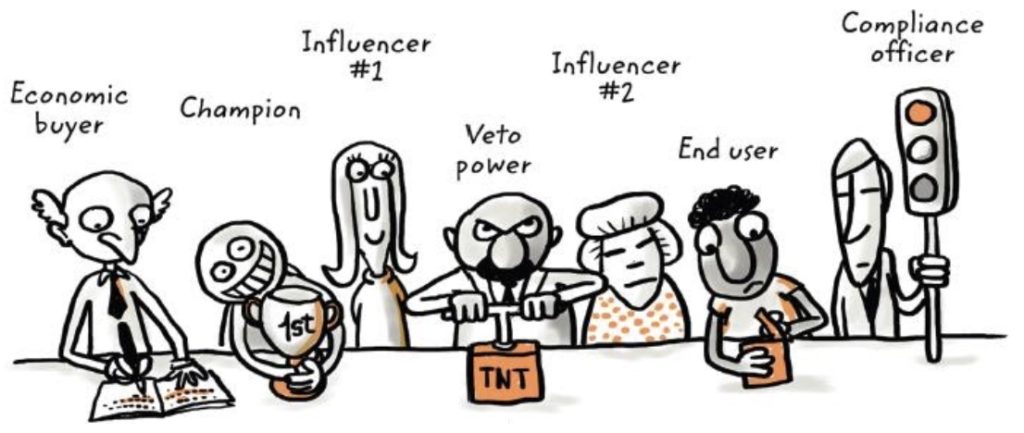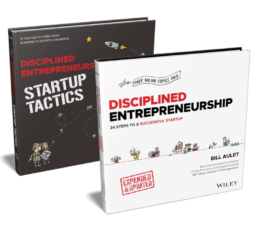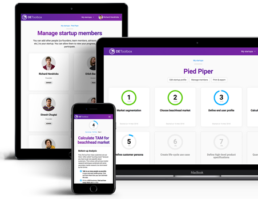The Disciplined Entrepreneurship Toolbox
Stay ahead by using the 24 steps together with your team, mentors, and investors.
Sign up for our newsletter
Or Why Disciplined Entrepreneurship Is More Than a Startup Creation Formula
The Disciplined Entrepreneurship methodology brought some structure to the chaotic process of starting and scaling a business. Though there is an emphasis on the discipline and rigor of going through each of the 24 steps, in a non-linear iterative process, I would also argue that there’s a value in applying some of these steps for various business decisions, or even life decisions for that matter. These lessons are now more generalizable to all of us as we re-analyze our businesses and see where we can find leverage points. For example, you might revisit your customer persona and see if their behavior has changed during the lockdown, or even go back to step 1 and redefine your customer segments. In this article, I will explain how mapping out the Decision-Making Process has helped us sustain the business in a time of crisis in Sudan.
Before joining my current MBA at Asia School of Business, in Kuala Lumpur, I was working for RoadMap Group, a small consulting firm. The company was established by Dr. Mohammed Elhadi out of his vision of building a new Sudan through innovation. I was leading the efforts of promoting innovation and entrepreneurship in the county and helping build the ecosystem. We acknowledged that this was a task to be performed by state agencies, but that meant it would never happen. Someone had to start something. We were fighting on two fronts: a) building our core competency with little access to world-class experiences and best practices, and b) convincing government agencies of the importance of fostering and promoting entrepreneurship for economic development. We built our internal expertise to the best of our abilities and partnered with regional and international players in the field to complement our services. We also held workshops and talks to raise awareness among different players of the ecosystem. We were also trying to help entrepreneurs who aspire to build their businesses.
Instability in Sudan
Although the pandemic has brought a crisis to people around the world, for Sudan, the crisis was the norm even before we heard of Covid-19. For a bit of historical context, Sudan was placed under US economic sanctions in 1997. The sanctions were lifted in 2017, with no effect on the life of Sudanese people because the country was also on the list of State Sponsors of Terrorism since 1993. Sudan was removed from the SST in December 2020. The sanctions and SST list meant that Sudan was cut-off from the world.
In December 2018, peaceful protests erupted and spread over the country. The youths have led a revolution that ended a thirty-year dictatorship of Omar Al-Bashir and his Muslim Brotherhood regime that brought the above-mentioned sanctions. The buildup to the protests started in 2011 when the South separated and took away most of the oil resources. The economic crisis intensified in 2017 and 2018 leading to people taking to the streets. The economy has completely fallen off the cliff. Life has come to a standstill in many business sectors. Anticipation filled the air, and the atmosphere was very intense. It was a post-apocalyptic scene. We had many clients who were interested in our consulting and training program, but no one wanted to take any business decisions. Everyone just waited to see what would happen.
Being a small company that mainly catered to government agencies, it’s become very challenging to continue. We were in a peculiar situation that called for a change. How could we survive amid mounting uncertainty and continue our mission? A question millions of small and big companies around the world are struggling with now because of the covid pandemic.
Adopting the DE Framework
To even get the Disciplined Entrepreneurship Workbook, for instance, we had to ask someone in Qatar to buy the book and send it to us. My boss and I were huge fans of the Disciplined Entrepreneurship framework, so you can imagine our excitement the day we received the book. The book helped us prepare training modules for entrepreneurs that didn’t have access to that type of training before. Moreover, DE has changed the way we think and act in the company.
Then we had this idea of resorting to the DE book for answers. We shrugged off the idea that the book is only useful for starting a company, and we said, “let’s use it to revisit our entire business model and see where things went wrong”. Mapping out our business assumptions across the different steps revealed some interesting findings. Step 12 Determine the Customer’s Decision-Making Unit (DMU) highlighted the main friction point in our selling process.

Here’s what we found:
- For the training programs, it was usually the concerned employees who were interested in our training packages such as strategic roadmapping, business process re-engineering, or innovation management
- Consultation to build business incubators were mainly driven by mid-ranked officials and there were several layers to the arduous process of decision making
- The Heads of Training and Development in many of the government units have a direct influence on who the training programs would be awarded to. They held veto power. Although we reached the end-users who were also the champions, it was a different game altogether for the economic buyer. We realized that there was under-the-table dealing that created a list of favorited training providers. Since we decided not to play that game, we saw programs that were requested by some units and co-designed with them, being rewarded to other vendors who had no experience teaching those modules
- It took us forever to be paid for most of our services to government entities. With the hyperinflation and rapid devaluation of the Sudanese pound, our pay would lose most of its value by the time we received it
This simple mapping process made us go back to the first step and see if this was still the right market segment to focus on. It became obvious that we needed to pivot and redefine our strategic direction. We needed that 1-degree change in the foundations of the business that would set us in a completely different course. The DMU analysis made us realize that we needed to revisit step 1 of Market Segmentation and look for a different type of customer. It has also revealed the type of customer that we needed to keep our business afloat. It was essential to find a customer who would have the following characteristics:
- An end-user who would champion the project
- A fast decision-making process and transparent communication
- A provision for training and ability to pay despite the economic and political crisis
- Paying in US dollars or an equivalent amount at the rate on the day of the transaction, to hedge against the currency devaluation
Though this exercise narrowed our options, it became clear to us that it was the only way out of the government agencies’ trap. We wasted a lot of effort seeding in unproductive soil. It was time we looked elsewhere. This new realization led us to a very unusual customer. It became obvious to us that private gold mining companies are the ones who check all our boxes. We had never thought of them as our customers before, but we were not in normal times and we had to think differently.
It shocked us that we already had contacts in one of the big mining companies this whole time, but we never approached them. We finally met the management of that company and found out that they were preparing their strategic plan, a task that we were equipped to help them with. What started as short-term consulting, turned into a complete organizational transformation and capacity-building portfolio that required engaging one of our international partners. Two years now and that mining company is still Roadmap’s biggest client. It was this shift in the focus that kept Roadmap alive and allowed it to continue its mission of promoting entrepreneurship in Sudan. Interestingly, with RoadMap’s help, the mining company is now planning to create a venture arm that will scout for and invest in new technologies in the mining sector. It was the private sector, after all, who saw the need for innovation and entrepreneurship.
Parting Thoughts
I reminisced about all this experience on the first day of Disciplined Entrepreneurship class by Bill Aulet as part of my MBA at Asia School of Business. I have relived the excitement of receiving the DE workbook when it arrived from abroad. Graduating soon in the time of the pandemic, I am looking now at the snake-shaped poster of the 24 steps, and thinking to myself, how this snake of wisdom can help me figure out this juncture of my life? What assumptions about myself have I taken for granted for so long? What’s my core? What value do I bring? What are my options? Where could I find a beachhead? Where would that lead me? And most importantly, being my own customer, what do I really want?
The author
Amjed Ali
Amjed is an innovation and entrepreneurship enthusiast with experience in promoting entrepreneurship in Sudan. Today, he is pursuing a global MBA at the Asia School of Business.

The books
This methodology with 24 steps and 15 tactics was created at MIT to help you translate your technology or idea into innovative new products. The books were designed for first-time and repeat entrepreneurs so that they can build great ventures.

How relevant was this article to you?
Click on a star to rate it!
Average rating 4.5 / 5. Vote count: 20
No votes so far! Be the first to rate this post.
We are sorry that this article was not useful for you!
Let us improve this post!
Tell us how we can improve this post?

This is an excellent article about effectively and smartly making use of this very innovative, yet well structured and Disciplined, approach.
I rate this article 5/5. By mistake I gave a rating of 3/5.
Thank you Amjed and my honor to follow the inspiring author, Bill Aulet.
Peace be upon you Mohammed. It is with such joy that we see how you implement what we offer and take it to a whole new level. We are all in this together. Entrepreneurship can be a great force for good in the world. Hope to meet you some time in person. Amjed is a gem.
Hi Bill
My sincere apologies for not reading this earlier. I am quite excited to meet you in person soon. I am passionate about spreading the DE anywhere I am in. In the coming days I will be presenting a 2-day workshop as awareness about the DE for some Omani startups. I need your blessing for this effort and that we can have the honor to talk to you in person and learn more
My kudos to Amjed and his team to be brave and bold. Bill’s work is unparalleled, off course.